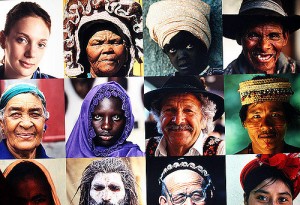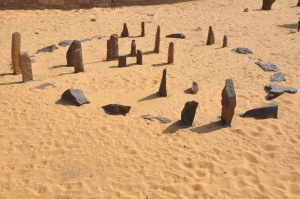
Have you ever wondered why the entire economical world operates around the Gregorian calendar even though it is based in a particular culture and religion? The Gregorian calendar isn’t exactly practical, with 12 uneven months as arbitrary partitions of a 365 day solar year. Why not build a calendar around the phases of the moon, like the Hijri calendar (Islamic calendar), or around both the phases of the moon and length of time it takes for the Earth to orbit the Sun, like the Hindu or Hebrew calendars? Or why not at least attempt to keep the number of days per month consistent, as in the Bahà’i calendar?
And what is up with dividing our history into two eras – the Common Era and everything “Before”? Previously the Gregorian calendar was divided into the first era, Before Christ (BC), and the second era, Anno Domini (AD), meaning ‘in the year of the Lord’. Since the 1980s these two eras have more commonly been referred to as Before Common Era (BCE) and Common Era (CE) in an attempt to remove all references to Christ and Christianity.
Even so, the dating conventions remain unchanged leaving the Gregorian calendar Christian in all but name. In fact, almost every calendar operates in a similar way determining its zeroth year based on something unique to each culture or religion (for instance the Hijri calendar is based on the Prophet Muhammad’s (PBUH) emigration from Mecca to Medina which marks the beginning of the at-taqwīm al-hijrī (AH) period).
Would it not be more convenient for international cooperation if a secular inclusive calendar was adopted? It may be too late to change weeks, months and years (and would likely cause chaos both personally and economically if one tried to do so). But surely the dating conventions could be much more flexible?

Kurzgesagt made a video in December last year detailing a proposed calendar by Cesare Emiliani. Here the hypothetical year zero takes place at the construction of the first human monument. The suggested zeroth year takes place 12 000 years ago in Turkey, and would be subject to change based on archaeological evidence, making this the year 12 017 of the Human Era. Such a revision makes human history seem much more impressive and is encompassing of all cultures and religions.
However, as inclusive as the video aims to be, there is a dearth of information regarding African history. In the rush of colonialism, entire swathes of African history were disregarded and thus forgotten. The study of African history is criminally undervalued and has only been taken note of by Western scholars in the last few decades. Given the lack of easily accessible information with regards to Africa’s contribution towards human history, we have done our best to compile some milestones of note.
- The Ishango Bone dates back over 20 000 years ago and was discovered in the mid 20th century in the Congo formerly known as Zaïre. It is essentially a bone (the fibula of a baboon) containing a series of notches in asymmetrical columns indicative of a simple numerical system suggesting a basic understanding of multiplication and division by 2. It may have influenced mathematics in Egypt.
- In Namoratunga, northwestern Kenya, an astrological observatory was discovered. This observatory consists of 19 stone pillars positioned randomly but believed to point in the direction of certain stars and constellations. This is strong evidence in support of African’s developing their own astronomically-based calendar system, even before Europeans.
- Around 7000 BCE, donkeys were domesticated in Ethiopia before they spread to South West Asia in 4000 BCE.
-

Image courtesy of Wikimedia Commons
It has been suggested that Megaliths found in Nabta Playa are examples of the world’s first known archaeoastronomical devices with the ‘calender circle’ pre-dating Stonehenge by some 1000 years. - There were suggestions that the area between Lake Chad and the African Great Lakes may have been the location of iron working (3000 BCE) and that iron smelting was developed here (1000 BCE) long before it reached Egypt. The people of the Termit region of Eastern Niger are thought to have become the first iron smelters in West Africa and among the first in the world around 1500 BC.
- Some of the oldest rock art in the world was produced by the Khoisan people, among others, who resided in Southern Africa. It has also been suggested that the ancestors of the Khoi were agricultural immigrants who became the hunter gatherer/pastoral Khoisan when they arrived in Southern Africa due to the change in climate.The Khoisan are thought to have been the largest population on Earth throughout most of modern-human demographic history.
